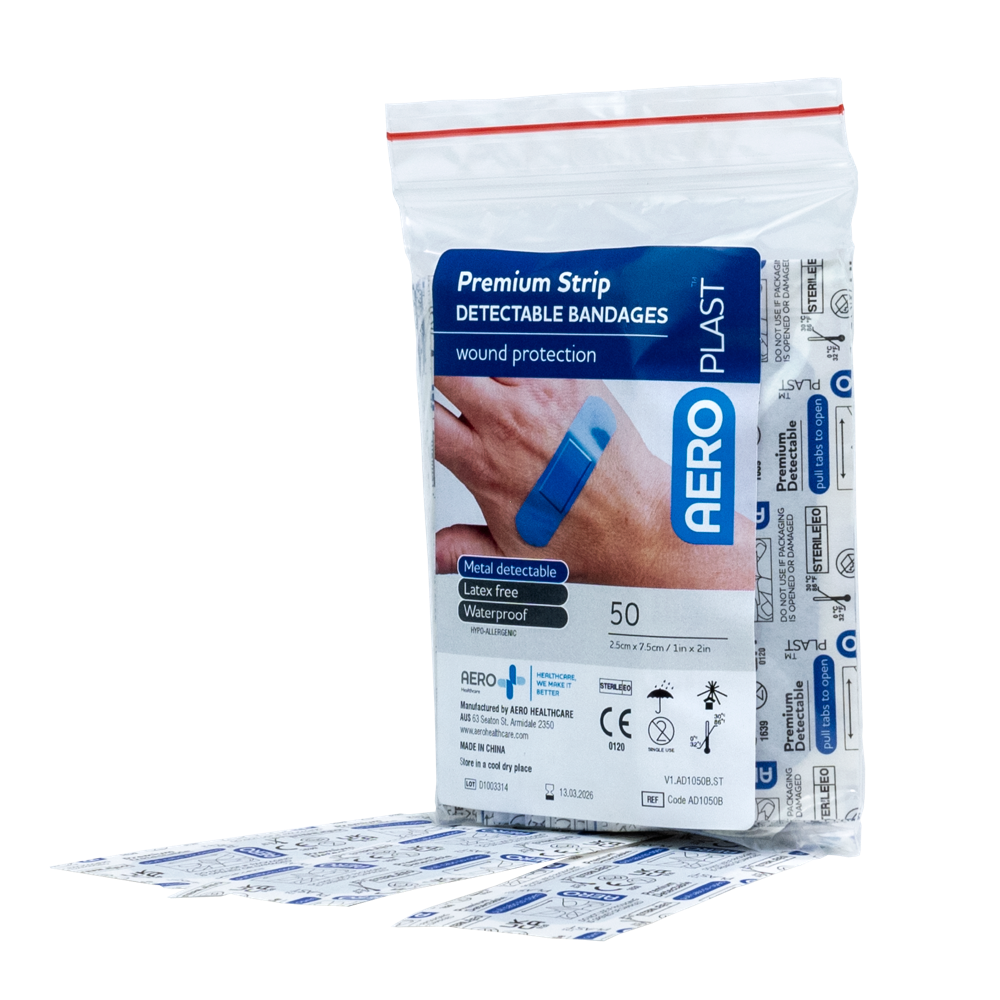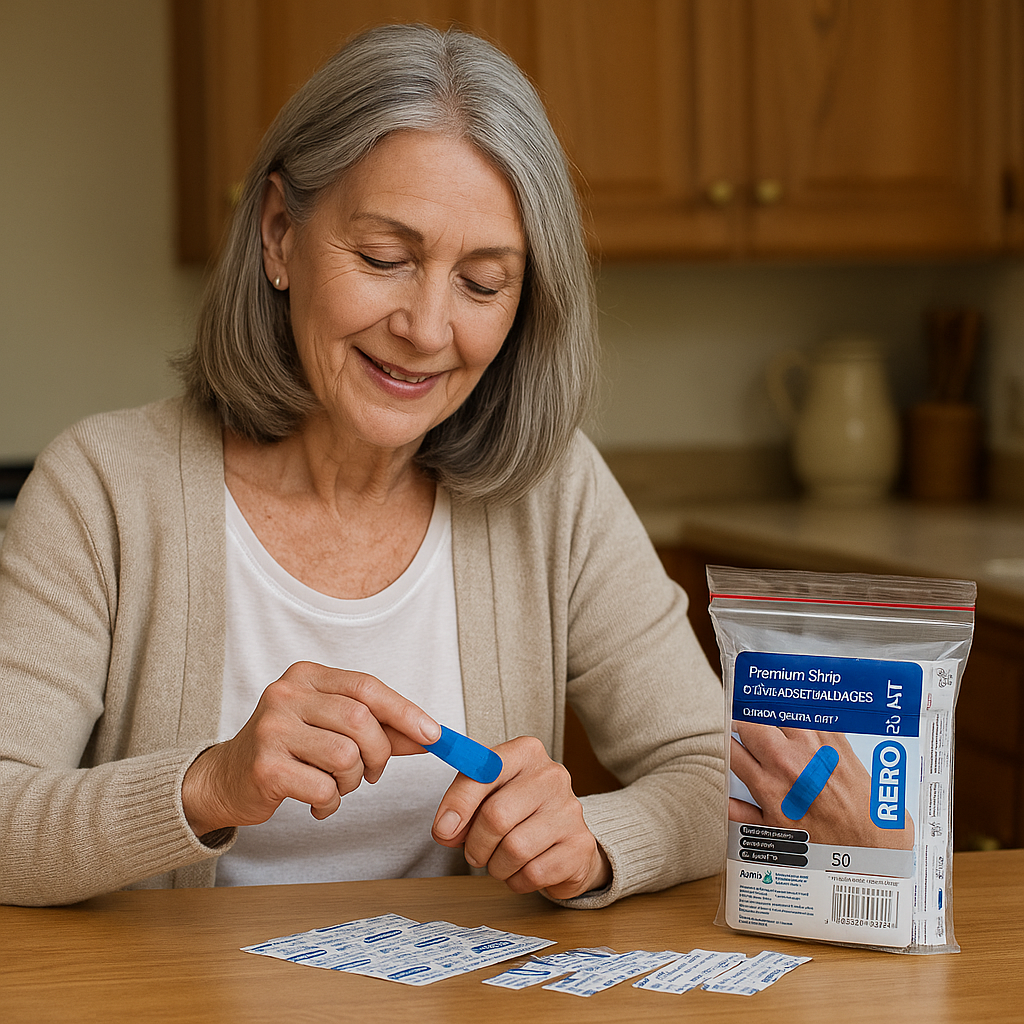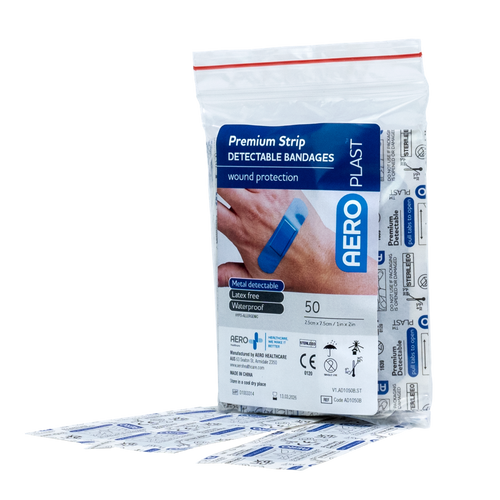Adhesive Bandages & Plasters for Every Skin Type
Discover the best adhesive bandages for sensitive skin, waterproof uses, and everyday wound care. Explore top-rated plasters trusted by Australians.
Summary
Adhesive bandages and plasters are a staple in every household and workplace first aid kit. Whether you're treating a blister after a hike, covering a minor scrape, or managing post-operative care, choosing the right bandage helps ensure comfort, protection, and faster healing.
With a wide range of options—from waterproof band aids to hypoallergenic adhesive bandages—there’s a solution for every need. This guide walks you through the most popular types, allergy-friendly solutions, and high-performing options that Australians trust.
What Are Adhesive Bandages?
Adhesive bandages, often referred to as plasters, are small medical dressings used to protect wounds from infection and external contaminants. They’re typically made up of:
- A sterile wound pad (usually cotton or a synthetic alternative)
- A flexible adhesive backing (latex or synthetic rubber)
- A protective layer or release liner
Their purpose is not just protection, but also promoting wound healing by maintaining a moist environment and preventing further injury.There are several types available on the Australian market today, each with specific functions:
Common Types of Adhesive Bandages
- Standard Adhesive Strips: Basic plasters for small cuts or grazes.
- Hydrocolloid Dressing Bandage: Designed for blisters and moist wounds, promoting healing through moisture retention.
- Waterproof Band Aids: Useful during showers or swimming, offering secure protection against moisture.
- Transparent or Skin-tone Bandages: Discreet, ideal for visible areas like the face or hands.
- Extra Large Adhesive Bandages: Cover larger wounds, surgical sites or post-injection marks.
- Bandage Tape: A flexible option that can be cut to size and used to secure gauze or other dressings.
According to Safe Work Australia, proper wound care is essential for infection prevention in both home and occupational settings. Choosing the right type of adhesive dressing can significantly reduce healing time and improve patient comfort.
Waterproof and High-Performance Bandages for Active Lifestyles
Australians lead active lives—beaches, bushwalks, sport, and physical work are all part of the daily rhythm. For those on the go, waterproof band aids and hydrocolloid dressing bandages offer durable protection.
When to Use Waterproof Bandages
- Swimming or water activities
- High-sweat environments (e.g., gyms, outdoor labour)
- Long-term wear during travel or sport
Benefits of Waterproof and Hydrocolloid Options
- Seal out water and bacteria
- Flexible and contour-hugging
- Promote faster healing for blisters and friction wounds
- Transparent designs for discreet use
The hydrocolloid dressing bandage market has grown due to its effectiveness in treating blisters and diabetic ulcers. These dressings keep the wound moist and insulated, accelerating tissue repair. Many also include cushioning to reduce further irritation.
According to a review published in The Medical Journal of Australia, moist wound environments (as created by hydrocolloids) can reduce healing time by up to 50% in certain wound types.
How to Choose the Right Bandage for Your Needs
When selecting an adhesive bandage, consider these key factors:
1. Wound Size and Location
- Finger or toe? Use shaped or fingertip bandages.
- Knee or elbow? Flexible and stretchable backing helps.
- Large scrape? Try extra large adhesive bandages.
2. Skin Type
- Sensitive or allergy-prone skin? Opt for hypoallergenic or silicone adhesives.
- Sweaty or oily skin? Choose waterproof and strong adhesive options.
3. Activity Level
- Active lifestyle or working outdoors? Go for waterproof band aids or durable hydrocolloid dressings.
4. Appearance
- Need a discreet look? Use clear, transparent, or skin-tone bandages.
5. Usage Duration
- Short-term? Use standard adhesive strips.
- Long wear? Use breathable fabric or hydrocolloid bandages.
For workplaces and schools, maintaining a diverse first aid kit that includes standard, hypoallergenic, waterproof, and large-size bandages ensures better preparedness.
Featured Products
Best Adhesive Bandages for Sensitive or Allergy-Prone Skin
Many Australians are sensitive to the adhesives used in standard bandages. Reactions can range from mild irritation to severe dermatitis.
Common Symptoms of Adhesive Allergy
- Localised redness and itching
- Raised, bumpy rash under the adhesive area
- Skin peeling or weeping
- Prolonged irritation even after bandage removal
These reactions are usually caused by the adhesive compounds, such as colophony (rosin), rubber accelerators, or preservatives used in the manufacturing process.
Top Solutions for Sensitive Skin
If you’re searching for the best bandages for adhesive allergy, look for the following features:
- Hypoallergenic Adhesive: Minimises the chance of skin reactions.
- Latex-Free: Ideal for those with latex sensitivities.
- Soft Cloth or Silicone-Based Backing: Breathable and gentle on skin.
- Low-Residue Removal: Reduces skin trauma when peeling off.
Brands now offer dedicated solutions like bandages for people who are allergic to adhesive, often using medical-grade silicone or alternative polymers.
For high-use areas like elbows or knees, hypoallergenic bandage tape allows flexibility and better fit. These can be combined with sterile non-adhesive pads for total control over wound coverage.
Frequently Asked Questions (FAQs)
-
What are adhesive bandages made of?
Typical materials include:
- Pad: Non-stick or medicated cotton for absorbing fluids.
- Backing: Fabric, plastic, or waterproof polymer.
- Adhesive: Natural rubber, synthetic polymers, or hypoallergenic silicone.
-
Where to buy covert adhesive bandages?
Clear or skin-tone plasters are widely available through pharmacies, supermarkets, and online. Look for discreet bandage packs in varying shades to match different skin tones.
-
How do you remove adhesive from surgical bandages?
Use petroleum jelly or a medical adhesive remover. Soaking the area with warm water can also help loosen the adhesive. Always pull the bandage back on itself slowly, keeping it low and close to the skin.
-
What are the best adhesive bandages for kids or elderly skin?
Look for:
- Soft, flexible fabric backing
- Hypoallergenic adhesives
- Cartoon or skin-tone designs for kids
- Extra-large formats for elderly skin, which may be fragile
Conclusion
Whether it's a minor cut from gardening or a blister after a run, adhesive bandages play a critical role in wound care. As everyday tools, they offer convenience, cleanliness, and faster healing.
But not all bandages are created equal. Your lifestyle, skin type, and environment influence the kind of protection you need.
With rising awareness around adhesive allergies, waterproof protection, and high-performance materials, Australians are becoming smarter and more selective in their first aid choices.
Ready to stock up on high-quality bandages and plasters?
Browse our curated range of adhesive bandages—from blister band aids to extra large hypoallergenic options.
📞 Call 1300 615 193 or order online at our website.
Adhesive bandages and plasters are essential for everyday wound protection, offering comfortable, reliable coverage for cuts, grazes, blisters and minor injuries. This collection includes high-quality options for sensitive skin, waterproof protection and active use, making it ideal for homes, workplaces, schools and first aid kits across Australia.
Items included in this collection:
• Standard adhesive strips for minor cuts and grazes
• Waterproof bandages for showering, swimming and active use
• Hypoallergenic plasters suitable for sensitive or fragile skin
• Extra-wide and large adhesive bandages for better coverage
• Hydrocolloid blister plasters for faster healing and cushioning


Recently viewed
FAQs
They are the same product—“plasters” is the common Australian term for adhesive bandages used to protect small wounds.
Hypoallergenic and silicone-based adhesive bandages are best, as they reduce irritation and are gentle on fragile skin.
Yes, waterproof adhesive bandages are designed to seal out water, making them suitable for swimming, showers and high-sweat activities.
Hydrocolloid plasters are ideal for blisters and friction wounds, as they cushion the area and promote faster healing by maintaining moisture.

